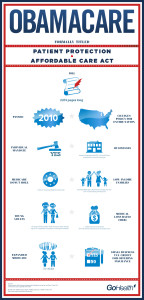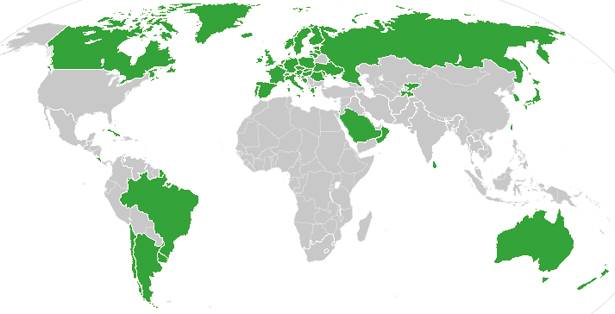 When Secretary Sebelius calls, I listen.
When Secretary Sebelius calls, I listen.
It’s a sort of “Help Wanted” ad from the Secretary of Health and Human Services Kathleen Sebelius that prompted me to write this post. The Secretary called for female bloggers to talk about the benefits of The Affordable Care Act last week when she spoke in Chicago at the BlogHer conference.
Secretary Sebelius’s request was discussed in this story from the Associated Press published July 25, 2013.
“I bet you more people could tell you the name of the new prince of England than could tell you that the health market opens October 1st,” the Secretary told the BlogHer conference in Chicago.
I’m here to help. I’m female and I blog — I was named one of Five Fierce Female Health Bloggers in 2009, and I’m still blogging. I also know a bit about ObamaCare — including the fact that I know that my long, longtime friend of over 20 years in the U.S. health scene inside the DC Beltway, Jeanne Scott, coined the actual phrase “ObamaCare” in the March 2007 issue of Healthcare Financial Management, documented in the New York Times. This fact alone gives me at least as much credibility for this post as any other opiner on the topic responding to Secretary Sebelius. So, in no particular order, here are Health Populi‘s Ten Reasons Why ObamaCare is Good for US….
1. The ACA calls out and invests more in primary care. This will help bring the U.S. closer to the industrialized world’s standard of a stronger primary care infrastructure. Every major economy on the planet has better health outcomes than America’s, and one of the secrets in the public health sauce is accessible primary care for all health citizens that ensures them an on-ramp to see a medical professional early and regularly. Primary care, the professional front-line and grassroots of health care, helps people bolster preventive efforts, stay on medications, get screened earlier for diseases, and provide health services in lower-cost settings. When folks seek primary care in emergency rooms and specialists’ offices, it raises costs. The ACA earmarks more resources for primary care training and services, such as those for community health centers and school-based care. Schools are often the primary care medical home for kids who don’t have a pediatrician.
2. The Health Insurance Marketplaces (HIXs), called exchanges in the legislation, are already bringing competition to local health plan markets. Early indications are that insurance rates in California, Maryland and New York will be lower than anticipated in January 1, 2014 when the ACA kicks into gear. While rates could be higher for certain individuals (especially younger adults), the overall impact from the beginning, across all newly-insureds, looks to be a net-positive.
3. A subsidiary benefit that the Health Insurance Marketplaces bring to consumers is greater transparency in health care costs and quality. The ACA established four levels of health plans – bronze, silver, gold and platinum – which encompass different benefit packages at different levels of cost-sharing. By creating these standard packages and benefit levels, consumers will be able to make apples-to-apples comparisons between health insurance companies and stretch new muscles as health “consumers,” which we’ve been called for many years, but have been dis-empowered through the lack of pricing knowledge. Instead, health consumers have been sticker-shocked at the point-of-care in doctors’ offices and hospitals, and in pharmacies at the point-of-purchase.
4. Paying attention to prevention is good for everybody. The ACA includes preventive screenings and services. When consumers have to pay out-of-pocket for prevention, millions of people postpone or avoid seeking care, even when modest co-payments have been involved. This has been especially the experience of women postponing health care due to cost.
5. Understanding medical treatments that work, and paying for what does while avoiding what doesn’t, gets us to a learning, high-performing health system. The comparative effectiveness component of the ACA helps get us here to bolster quality services for all Americans. This week, the Mayo Clinic published a list of 146 therapies that aren’t very useful, questioning stenting for heart disease, hormonal therapy for menopausal women, and the use of Cox-2 inhibitors (think: Vioxx). The ACA’s commitment to comparative effectiveness addresses what works in health care and what doesn’t — which helps drive out waste and unnecessary spending in U.S. health care.
6. Paying for value in health care, and not for volume as our fee-for-service health financing schema has largely covered most of the U.S., is a step in the right direction toward bending that stubborn increasing-cost curve. While the ACA doesn’t address health care costs as aggressively or comprehensively as it might have done, I’m not throwing out this health reform baby with that bathwater. The CMS Innovation Center is evaluating many pilot programs testing new methods for health care delivery and financing; those seen as cost-effective and -beneficial can be models deployed through Medicare, Medicaid and commercial health plans.
7. Filling in the doughnut hole for seniors in the Medicare Part D program for prescription drug coverage is a good thing. The so-called doughnut hole is a financial gap requiring Medicare enrollees in the Part D plan to spend up to $2,930 in 2012, with no coverage for the next $3,700 out-of-pocket spending. There is evidence that seniors who fall into the doughnut hole often skip prescriptions, such as antidepressants, at that point in (non)coverage, thus compromising older peoples’ health care leading to greater disease and disability, and higher costs downstream.
8. Covering young adults between 18 and 26 years of age is a good thing for those people, their families, and their employers. This age group has been the most at-risk for not being covered by health insurance. The Commonwealth Found in 2010 that 45% of young adults reported delaying needed care because of costs in 2010, up from 32% in 2001, and 39% reported problems paying medical bills. This group of health citizens is the least-likely to have full-time jobs that provide health insurance.
9. No lifetime coverage limits on insurance is a good thing for people, especially those of us dealing with serious illnesses. Americans who have been insured and sick, accruing big medical costs, understand this situation all-too-acutely (pun intended). That’s estimated to be 105 million people in the U.S., about equal shares of women, men, and children. Simply put: as of September 23, 2010, health plans were no longer allowed to stop paying for health care because a U.S. health citizen has reached a lifetime spending limit. This covers everyone who has health insurance, whether through a job or a plan purchased individually.
 10. Universal coverage as a national objective is the mark of a civilized society. Check out the map: the U.S. is the only highly-developed country in the world without universal health care coverage. “The only developed outliers are a few still-troubled Balkan states, the Soviet-style autocracy of Belarus, and the U.S. of A., the richest nation in the world,” The Atlantic assesses.
10. Universal coverage as a national objective is the mark of a civilized society. Check out the map: the U.S. is the only highly-developed country in the world without universal health care coverage. “The only developed outliers are a few still-troubled Balkan states, the Soviet-style autocracy of Belarus, and the U.S. of A., the richest nation in the world,” The Atlantic assesses.
Health Populi’s Hot Points: These 10 items are my own priorities, filtering through my lens as a health economist, advisor to the health industry for over 20 years, wife, mother, friend, community member, world traveler, health citizen.
While the ACA isn’t exactly codified as I might have done – especially regarding changing care delivery processes to get more self-care and telehealth into the system – the plan has already positively impacted the overall health care market driving more transparency into the system, getting younger people health-covered, promoting preventive services, and getting health plans moving toward being more consumer-friendly and -accessible for the markets launching on October 1, 2013.
For those of you who like lists of 10, here are several other “best of ObamaCare” lists you may enjoy reading:
US News, 10 good things about ObamaCare
Mother Jones, 10 things you get now that ObamaCare survived
ThinkProgress, Top 10 ObamaCare benefits at stake for women




 I am so grateful to Tom Lawry for asking me to pen the foreword for his book, Health Care Nation,
I am so grateful to Tom Lawry for asking me to pen the foreword for his book, Health Care Nation,  Thanks to Feedspot for naming this blog, Health Populi, as a
Thanks to Feedspot for naming this blog, Health Populi, as a